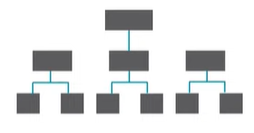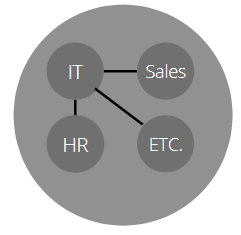Why do we need scaled-agile? | SAFe Framework | Scaled Agile Framework
Agile is a methodology that follows an incremental approach for development and product delivery.
This approach works fine for smaller team sizes and relatively lesser complex projects. However, when
this methodology has to be incorporated at an enterprise level, where thousands of agile teams are required to be
aligned and work in conjunction for a relatively more complex project, then the scaling of agile comes into the picture.
However, scaling agile across the enterprise poses a big challenge. Therefore, the adoption of an appropriate Scaled Agile Framework is necessary.
There are two types of scalability:
-Vertical
-Horizontal
Vertical scaling- In vertical scaling, multiple independent agile teams jointly plan, develop,
integrate, test, and deploy a product based on an integrated product vision.

Horizontal scaling- In horizontal scaling, the agile approach, lean-agile mindset, and agile concepts are adopted
by functional levels - such as HR, sales, finance, procurement along with different other groups collaborating.

Benefits of scaling agile:
1. It offers enterprise-wide visibility, strategic alignment, and planning
2. It guarantees enhanced productivity and transparency
3. It facilitates program increment planning (PI)
What are the various Scale Agile Frameworks?
-Large - scale scrum (LeSS)
-Scaled Agile Framework (SAFe)
-Disciplined Agile Delivery (DAD)
-Scrum at Scale
-Nexus Scrum
-Spotify Model
Out of these frameworks, SAFe agile is the most common and widely used framework.
What is SAFe framework?
SAFe stands for Scaled agile framework for enterprise. It is a set of organizations and workflow patterns intended to guide enterprises in scaling lean agile practices. It consists of a collection of principles, best practices, and processes that would enable large organizations to adopt agile methodologies. It enables you to apply lean-agile and scrum practices at large enterprise levels. SAFe is best suited for complex projects that involve several large teams at the project, program, and portfolio levels. The current version of SAFe is ver. 5.0. It has seven core competencies based on which it helps large organizations.
Core values of SAFe:
1. Alignment
2. Transparency
3. Built-in quality
4. Program execution
SAFe Configurations:
1. Essential SAFe
2. Large Solution SAFe
3. Portfolio SAFe
4. Full SAFe
How does SAFe work?
As we have seen, the SAFe framework essentially has 4 configurations, out of which the essential SAFe is the most basic one with
a very minimal amount of events, roles, and artifacts involved. It is used when there is only one Agile Release Train involved.
Agile release train (ART)
- It is the heart of Essential SAFe. It is a group of multiple agile teams (typically consists of 5 to 12 agile teams), who along with other stakeholders, incrementally plan, commit, develop, and deploy one or more solutions that deliver benefit to the end-user. The ART is supposed to deliver an incremental value in the form of tested and working software. Every agile team in an ART is required to deliver a feature within a standard, fixed-length timebox called iteration. The ART follows an iteration of 2 to 4 weeks where each agile team in the Agile Release Train works on delivering their respective feature. All the integrated features of all the agile teams in the ART are called program increment PI.Once all these multiple agile teams are ready with their features, a system demo is organized. Once the system demo concludes, the next event that happens is 'inspect and adapt'. In this event, the current state of the solution is demonstrated and evaluated by the ART.
Large Solution SAFe: this configuration has multiple ART.
Full SAFe: It is the most comprehensive configuration of SAFe. It combines all the three configurations of SAFe i.e. Essential SAFe, Large Solution SAFe, Portfolio SAFe
